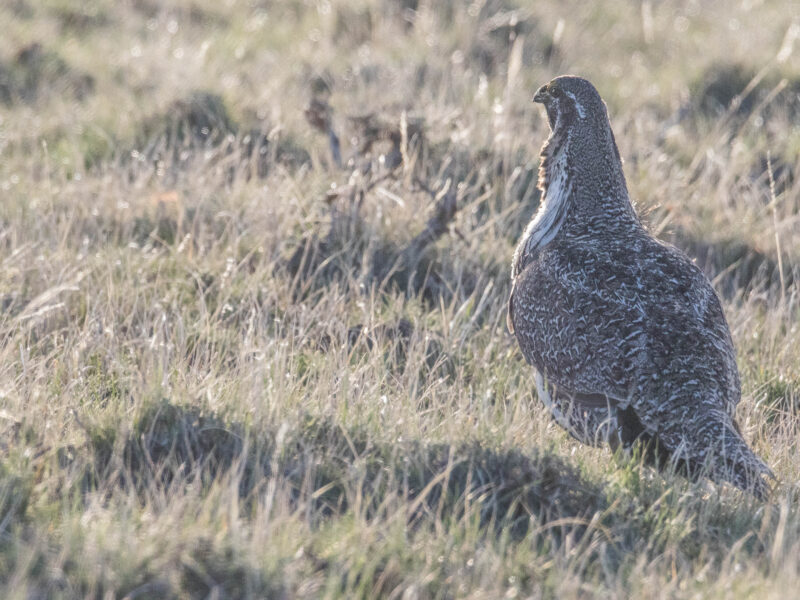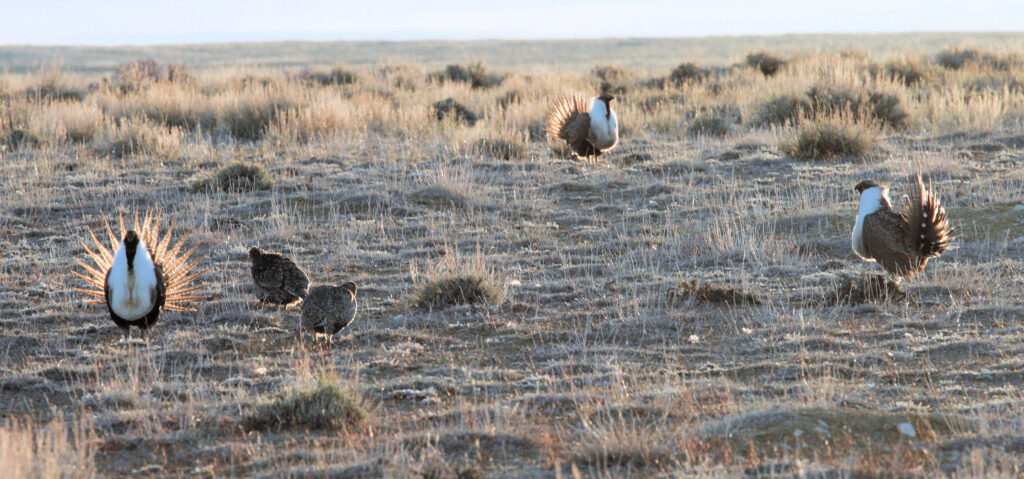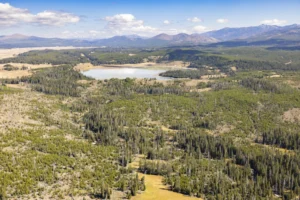Wyoming, Feds Consider Additional Sage Grouse Protections
New review could result in increased help for the vulnerable, iconic birds
- Published In: Other News & Features
- Last Updated: Jul 23, 2023

Although both sage grouse populations and habitat have declined in recent decades, Wyoming remains home to an estimated 38% of all the birds on the planet. (Courtesy photo from Wyoming Game & Fish Department)
By K.L. McQuaid
Special to the Wyoming Truth
Wyoming and the federal government are simultaneously evaluating sage grouse protection measures that, taken together, could result in the most sweeping habitat safeguards in a decade for the besieged bird.
Most notably, the state’s Sage Grouse Implementation Team (SGIT) is embarking on its first review of so-called “core” sage grouse protection areas since 2019. The review may revise and add habitat land to the current 15.2 million acres of Wyoming – about 24% of the state – that are already recognized as areas the birds frequent.
Bob Budd, the chairman of the SGIT and executive director of the Wyoming Wildlife and Natural Resources Trust, said a SGIT committee formed in March has been evaluating data from working groups and other sources to potentially adjust core area maps.
A public comment period on new maps – which can be found on the Wyoming Game & Fish Department’s website –is slated to end on Friday, but SGIT may hold a few additional public meetings on the subject this summer at the behest of Gov. Mark Gordon.
“We’re involved in an iterative process,” Budd told the Wyoming Truth. “We have a good plan in Wyoming, it’s been proven over time. What we’re talking about now is the where, because there are areas affected we didn’t know about. But both addition and subtraction adjustments could be made.
Sage grouse populations in Wyoming have been decimated in recent decades as development, wildfires and other negative impacts have encroached upon their habitat.
At one time estimates held that there were 16 million sage grouse in Wyoming. Today, that figure is down to about 500,000.
Wyoming, which established core protection areas in 2008, is today home to an estimated 38% of all sage grouse remaining on the planet.
“We hit a rough patch or two in our conservation efforts, and things got dicey there for a while for the bird,” Budd said. “But Wyoming has been a pioneer in the preservation process. The people of Wyoming have been incredible in taking this seriously.”

For example, Budd said one potential map change could stem from a proposed windfarm – since cancelled – that had been kept off the core protection map but may be included going forward.
If adopted, the new maps could add thousands of acres of land to core protection areas, but Budd cautioned that “we need to let the process play out.”
A wider BLM review
Meanwhile, the federal Bureau of Land Management (BLM) is conducting its own, wider review of sage grouse protections in 10 Western states, including Wyoming. In all, its analysis involves 67 million acres.
Its review – the first since 2015 after courts blocked a 2019 effort –could also result in a wider swath of land that is included in BLM the agency’s Priority Habitat Management Area, the federal equivalent of the state’s core areas.
“We’re coordinating with the state [Wyoming], and we recognize that it’s very important that our maps come as close together as they can with Wyoming’s, if not exactly the same,” said Brad Purdy, deputy state director of communications with BLM’s Wyoming office.
“One of the things we’ve found is that the bird doesn’t care about state lines,” Purdy said. “So we’re trying to get things all coordinated. Everything is interlocked. There’s almost nothing that goes on in the West that doesn’t have an impact on this bird.”
BLM’s draft environmental impact statement on the issue likely will be completed within the next six months, Purdy said.
Once complete, the agency intends to embark on an extended public comment period of at least 90 days in Wyoming and elsewhere.
“We understand there will be a large volume and a lot of diverse comments that will take place,” he said. “Ultimately, we want the best results for the bird, for industry and for the citizens of Wyoming. We want to save the bird and its habitat, and that requires a collaborative effort.”
He estimates the agency’s review to be completed next year.
SGIT’s Budd is taking a similar tone.
“We need to look at all the data and listen to the public,” Budd said. “We’ll continue to do what’s right for the bird and the state’s economy – both are important.”
He expects SGIT’s review to be completed later this year and be submitted to Gordon.
Budd also said the working relationship with BLM has been productive to date.
“They’ve worked with us, they’re trying to communicate,” Budd said. “We realize they get pulled in a lot of different directions.”
He’s optimistic the dual review will result in maps that balance competing interests.
“We know we’ve lost habitat over time, but the birds are showing some good resilience,” Budd said. “This past winter they did very well overall, and the components that we need to be successful are there in place and will be continue to be there.”













